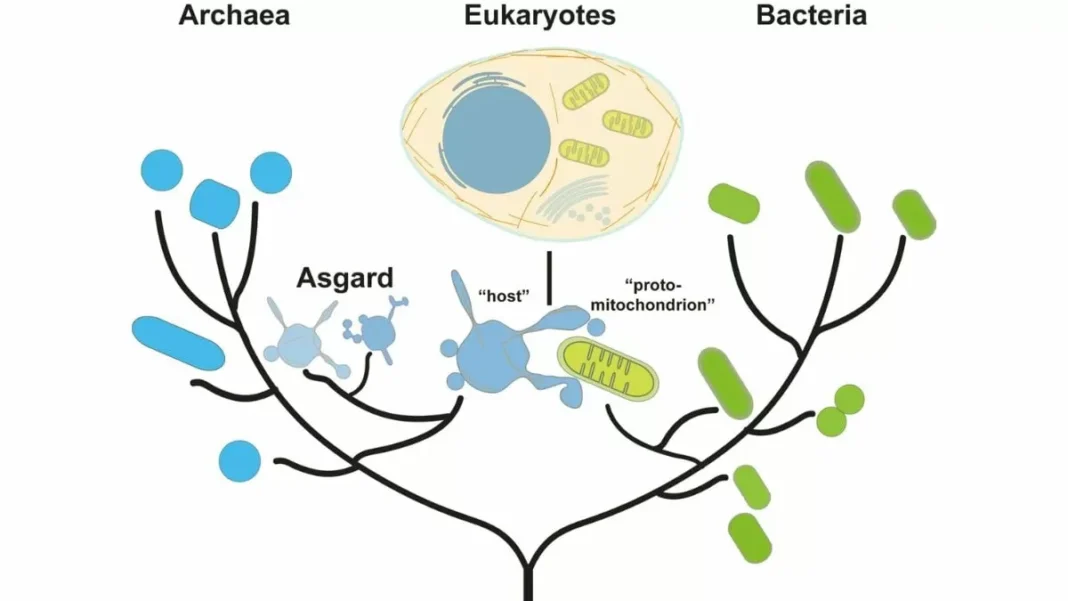The world of microbiology has always been full of surprises, and once again, a groundbreaking discovery has been made. Researchers at ETH Zurich have identified a group of single-celled organisms, known as Asgard archaea, that may hold the key to understanding the evolution of eukaryotic cells. These tiny microbes, found in the depths of the ocean, have challenged the traditional three-domain model of life and have opened up a whole new realm of possibilities in the study of complex life.
For centuries, scientists have been fascinated by the origin of eukaryotic cells, which are the building blocks of all complex organisms, including humans. These cells are characterized by a nucleus and other membrane-bound organelles, which are not found in prokaryotic cells. The traditional three-domain model of life, proposed by Carl Woese in the 1970s, divides all living organisms into three domains – Archaea, Bacteria, and Eukarya. However, the recent discovery of Asgard archaea has challenged this model and has raised questions about the evolution of eukaryotic cells.
The name “Asgard” comes from Norse mythology, where it is the home of the gods. Just like their namesake, these microbes have proven to be truly extraordinary. They were first discovered in 2015, in the sediments of the Arctic Ocean, and have since been found in various other marine environments. These microbes are incredibly small, with a size of only 5 micrometers, and are often referred to as “microbial giants” due to their complex cellular structures.
What makes Asgard archaea so special is the presence of cytoskeletal proteins that are similar to those found in eukaryotic cells. Cytoskeleton is a network of protein filaments that provide structural support and enable cell movement and division. This discovery has challenged the traditional three-domain model, as these proteins were previously thought to be exclusive to eukaryotes. The presence of these proteins in Asgard archaea suggests that they might have played a crucial role in the evolution of eukaryotic cells.
The team at ETH Zurich, led by Professor Christa Schleper, used state-of-the-art technology to analyze the genetic makeup of Asgard archaea. They found that these microbes have a complex genome, with a large number of genes involved in cell division, membrane trafficking, and other processes that are essential for the functioning of eukaryotic cells. This suggests that Asgard archaea might have been the missing link between prokaryotes and eukaryotes, enabling key interactions that led to the development of complex life.
The discovery of Asgard archaea has not only challenged the traditional three-domain model but has also opened up new avenues for research. It has sparked a debate among scientists about the origin of eukaryotic cells and has raised questions about the diversity of life on Earth. This discovery has also shed light on the importance of microbes in our ecosystem and their role in shaping the world we live in.
The implications of this discovery are far-reaching and have the potential to revolutionize our understanding of the evolution of life. It has also sparked a renewed interest in the study of Asgard archaea, with researchers from all over the world working to unravel the mysteries of these tiny microbes. The findings of this study have been published in the prestigious journal Nature, further cementing its significance in the scientific community.
The discovery of Asgard archaea is a testament to the endless possibilities of scientific research. It is a reminder that there is still so much to learn about the world around us, and that even the tiniest of organisms can hold the key to unlocking the mysteries of life. This groundbreaking discovery by the team at ETH Zurich is a step towards a better understanding of our origins and the complex world we live in.
In conclusion, the discovery of Asgard archaea has challenged the traditional three-domain model of life and has opened up a new chapter in the study of complex life. These tiny microbes, with their complex cellular structures and genetic makeup, have provided valuable insights into the evolution of eukaryotic cells. The future of microbiology looks bright, and we can only imagine what other surprises the world of microbes has in store for us.



